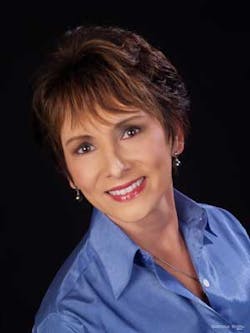Dental hygienists in long-term care facilities; laser hygienists; dental implant hygiene home care; news you can use
At the beginning of the 20th century, people 65 and older comprised 4.1% of the population. Baby Boomers were born between the years 1946 and 1964, and there were 77.3 million Boomers in 2008. By the year 2030, it is estimated that people 65 and older, the “Baby Boomer” generation, will comprise more than 20% of the population.
The 65 plus age group is the fastest growing segment of the population in the USA. The United States Census Bureau estimates that by the middle of the 21st century, the number of persons 65 and older will double to approximately 80 million.(1) This will have a profound effect on the practice of dental hygiene, dentistry, and on society.(2) Older people with limited access to care are less likely to schedule dental visits on a regular basis.(3)
As people age, it is necessary for some to live in long term care facilities. Oral neglect, as well as poor oral health and oral hygiene, is highly prevalent among the institutionalized elderly.(4) Residents of long term care facilities that suffer from dementia, who are functionally dependent and cognitively impaired, seem to be affected most. This is a challenge to oral health care professionals, as the proportion of weak elderly with dementia and disabilities is expected to rise over the coming decade in most developed countries of the world.
Caries experience among the institutionalized elderly is associated with disability, and lack of oral care. Appropriate preventive measures, and interventional activities, should be performed to control oral disease among long term care facility residents. See the article here entitled: Introduction of Dental Hygienists in Long-Term Care Facility for Patients with Alzheimer Disease and Cognitive Impairment, by Dr. Simona Cirulli and Prof. Dr. Laura Antonia Marino.
The project took place in Italy, and was a collaboration between the teams of the Alzheimer’s Oral Health Service and the Department of Dentistry of Pio Albergo Trivulzio. They were able to highlight the importance of including dental hygienists within the care team, with the goal to assess and restore the oral health of these patients in the overall care of the individual.
We are also featuring: Anyone can be a Laser Hygienist! by Angie Mott, RDH. Regarding the use of lasers by dental hygienists, as with many duties, the scope of practice varies from state to state. Some dental hygienists use lasers for curettage, which is a controversial procedure. States that allow dental hygienists to use lasers (under direct or general supervision) for curettage are: Arizona, California, Colorado, Hawaii, Idaho, Maine, Michigan, Missouri, Montana, Nebraska, Nevada, New Hampshire, North Dakota, and Tennessee.
Be aware that not all states address laser use by the dental hygienist. For instance, if a function (like curettage) is legal for dental hygienists in a state, the operator is free to use their instrument of choice (such as a manual or ultrasonic instrument, or a laser). Please note, this information is general in nature and you should always contact your state board to determine the scope of practice in your state.
In April 2011, the American Academy of Periodontology (AAP) issued a Statement on the Efficacy of Lasers in the Non-Surgical Treatment of Inflammatory Periodontal Disease.(5) The conclusion of the AAP is that further study is needed to determine if laser-assisted scaling and root planing SRP has a beneficial effect.
The American Dental Association (ADA) has a “Statement on Lasers in Dentistry.”(6) The primary purpose of the Statement is to provide comments and a science-based perspective on several increasingly popular uses for dental lasers. These topics include: Sulcular Debridement (sometimes termed Laser Curettage), Laser-Assisted New Attachment Procedure (LANAP), Reduction of Bacteria Levels in periodontal pockets (sometimes termed Pocket Sterilization), Laser-facilitated Wound Healing, Laser Root Planing, Aid in the Diagnosis of Caries (Laser Fluorescence), and other Hard Tissue Applications including endodontics. The statement also provides a brief overview of the FDA’s 510(k) process and educational options for dental laser systems.
Our feature: Dental Implant Hygiene Care At Home – What Can Patients Do? By Dagmar Else Slot, RDH, MSc., of the Netherlands, was one of the presentations made by Dagmar at the Europerio 7 meeting in Vienna. Dagmar is a Researcher at the Periodontology Department, ACTA University Amsterdam the Netherlands. A very dynamic individual! We feature another one of Dagmar’s presentations next month.
In News you can use!, I discuss the safe use of cone-beam CT, and a topical gingival patch containing natural extracts.
Enjoy, and as always, thanks to my wonderful contributors!
References
1. U.S. Bureau of the Census. Current Population Reports, Special Studies, P23-190, 65+ in the United States. U.S. Government Printing Office, Washington, DC, 1996.
2. Dickinson C, Beatty CF, Marshall D. A pilot study: are dental hygienists in Texas ready for the elderly population explosion? Int J Dent Hygiene 10, 2012; 128–137. DOI: 10.1111 ⁄ j.1601-5037.2010.00526.x).
3. Plane DA, Jurjevich JR. Ties that no longer bind? The patterns and repercussions of age-articulated migration. Prof Geogr 2009; 61: 4–20. DOI: 10.1080/00330120802577558. Available at: http://www.polarisanalytics.com/jason_jurjevich_files/PlaneandJurjevich.pdf. Accessed August 13, 2012.
4. Philip P, Rogers C, Kruger E, Tennant M. Int J Dent Hygiene 10, 2012; 122–127. Caries experience of institutionalized elderly and its association with dementia and functional status. DOI: 10.1111/j.1601-5037.2011.00525.x.
5. American Academy of Periodontology Statement on the Efficacy of Lasers in the Non-Surgical Treatment of Inflammatory Periodontal Disease. J Periodontol, April 2011, Vol 82:4: p 513-514.
6. ADA Statement on Lasers in Dentistry. http://www.ada.org/1860.aspx. Accessed August 13, 2012.
Sincerely,
Maria Perno Goldie, RDH, MS
To read previous RDH eVillage FOCUS introductions by Editorial Director Maria Perno Goldie, go to introductions.








